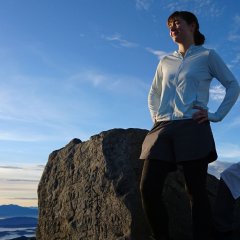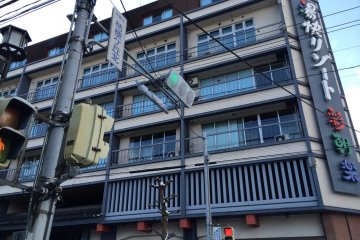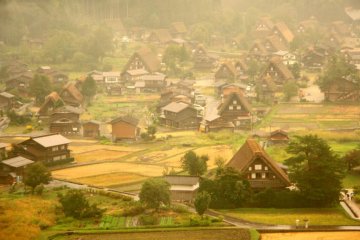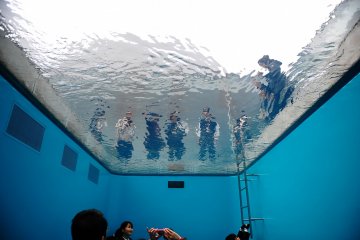Mt. Hakusan, one of Japan’s three sacred mountains, lies in the south of Ishikawa Prefecture, and has been revered since ancient times. The area is designated as both the Hakusan Tedorigawa UNESCO Global Geopark, and UNESCO’s Mount Hakusan Biosphere Reserve. It receives immense amounts of snow each winter, providing a rich supply of water that nurtures an equally rich and bountiful forest. Here, at the base of Mt. Hakusan, a unique culture arose called dezukuri, making use of the natural landscape to live self-sufficiently.
At the Hakusan Folk Museum, you can learn about this unique dezukuri lifestyle, which developed around the village of Shiramine. Dezukuri is an agricultural lifestyle, which involves a family building a house and living deep in the mountains, several kilometers from the village. Here they would grow crops like millet and beans – as rice couldn’t be grown on the steep mountainsides. While growing crops and vegetables to live off, they would forage the mountains for plants and mushrooms, hunt animals for meat, and also raise silkworms, make charcoal, and cut timber to earn an income.
Dezukuri was conducted in this area even through the late 20th Century, but saw a rapid decline following WWII. Ishikawa Prefecture and Shiramine Village purchased houses at risk of abandonment or destruction, and moved them here to preserve them. All of the houses on display are at least over 100 years old, with one estimated to be over 300 years old. They can be entered freely, and you can see and touch many of the tools used by the owners of the houses.
Throughout the year various events are held to help preserve the traditional culture. Millet, herbs, and vegetables are grown in the garden in spring and summer, and are dried, hulled and milled using traditional methods in autumn. With booking, various experiences are also available, such as dying cloth with tree bark, grinding grains using a stone mill, grand Buddhist feasts, and tochi mochi horse chestnut rice cake pounding.
The below buildings are some of the highlights of the museum.
The Main Museum Building
This should be your first stop at the museum, where you can learn about the details of dezukuri, and get an overall picture of life several hundred years ago. See pictures of real dezukuri in their original locations, with hundreds of artifacts detailing the daily lives of people – from farming tools to religious practices. English translations are available through QR codes and panels, so you can thoroughly enjoy the museum.

The Former Sugihara Residence
This building is Ishikawa Prefecture’s largest traditional house, and was built in 1864 by a rich merchant in the village. Three stories high, it is full of fascinating artifacts and exhibitions, as well as picturesque rooms to explore. Inside the building, on select days, you can try local herb tea, and finger millet paste sweets.

The Former Nagasaka Residence
A large thatched-roof house with a vegetable garden attached. This house was built in 1872, deep in the mountains about 7 km upstream from Shiramine. The Nagasaka family lived permanently in the mountains, living self-sufficiently off the land. Here you can really get a sense of how life must have been in the past. The garden is utilized every year to grow various crops that are used for events at the museum.

The Former Kogura Residence
Designated as a National Important Cultural Property, this house is estimated to have been built in the 17th Century, over 300 years ago, and is the oldest building in the museum. Here you can see architectural features unique to houses of this time, making it a very rare and valuable building.

General Information
Open: 9am to 4.30 pm (last entry 4pm)
Closed: Thursdays (closed on following Friday if Thursday is a public holiday)
Winter: The museum is closed in winter (11th December to 9th march), but can be opened with advanced booking.
Admission:
- Adults: 260 yen
- 65+ years old: 200 yen
- Groups (20+): 210 yen
- Children (High school and below): Free
English Support
The following website provides English support for visiting Shiramine. If you need help finding more information, or booking cultural experiences, they can assist you. Visit Shiramine: https://yositai2022.wixsite.com/visit-shiramine/things-to-do
































